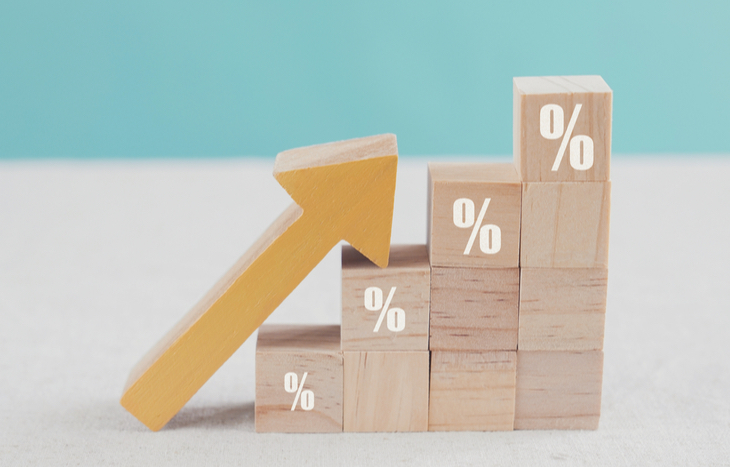How Do Interest Rates Work?
If you’re buying your first home or getting ready to invest in securities for the first time, you probably have a lot of questions. The first and most important should be, “How do interest rates work?” This is an invaluable first question to ask because it’ll govern how you look at your investment – whether you’re a borrower taking on new debt or an investor calculating ROI.
The fact is interest rates are the defining variables that control investments. Even more important than time, interest rates dictate what you can expect to gain from an equity or owe in debt. But they’re not just numbers – they have meaning and purpose. Understanding how interest rates work is your secret to maximizing your choices when it comes to investing. Here’s what you should know about this all-important governing factor.

What Is an Interest Rate?
An interest rate is a percentage of a principal value that’s owed in regular intervals over the term of an investment. It’s the cost of borrowing money. Or, if you’re the creditor, it’s your rate of return. An interest rate is what makes lending money lucrative, and it’s a way of determining the cost of borrowing before you decide to take a loan. Here’s a simple example:
Marybeth is buying a rental property. Her mortgage is for $260,000 with an interest rate of 3.15% over 30 years. In addition to paying off the balance of her property, she’ll pay an additional $139,687.35 over the life of the loan.
Interest rates can be fixed or variable and can come with different compounding rates. For example, your stock market investments might have a variable rate of return each year. Conversely, your credit card debt may compound daily at a fixed rate. The interest rate, compounding frequency and term length all depend on the financial vehicle.
Fixed vs. Variable Interest Rates
There’s special significance in understanding fixed vs. variable interest rates. One is predictable; the other isn’t. In some situations, one is preferable over the other. Here’s a look at what makes them different.
- Fixed interest rates don’t change over time. They’re agreed upon at the outset of an investment. For example, if you take out a 30-year mortgage with a 3.25% fixed interest rate, that rate will remain the same for the next 30 years, through the term of your loan. The same goes for fixed-rate bonds and similar investment vehicles.
- Variable interest rates are subject to fluctuations and dependent on market forces. To encourage borrowing, rates tend to be lower during times of economic hardship and higher during stable periods. These are sometimes called adjustable or floating rates and can vary by several percentage points over the term of the investment.
There are also annual percentage rates (APRs), which typically involve credit purchases. This is interest expressed annually on the total cost of the loan.
Variable interest rates typically involve more risk and more reward because they have the potential to swing above or below the average prime rate at the time of agreement. Conversely, fixed rates are stable and predictable, but they aren’t always prime.
Compounding Interest
An interest rate becomes a powerful tool when compounding comes into the mix. If you choose to reinvest interest payments back into the principal balance, that balance is able to generate higher interest payments. This continuous reinvestment cycle creates exponential growth – even if the interest rate remains unchanged. This is how most investments accumulate wealth over time, regardless of whether the rate of return is a fixed or variable percentage.
To see the power of compound interest at work, check out our investment calculator. You’ll have the ability to plug in different variables to get a better understanding of how compound interest exponentially grows an investment.
The Relationship Between Principal and Interest Rate
An interest rate by itself is just a numbers. It becomes powerful only when you pair it with a principal amount. Then you’ve got the missing part of the equation for what you’ll earn or owe, depending on whether you’re investing or borrowing.
Take a look at a few examples of how principal and interest rate play off of each other over a 30-year period:
- A compound rate of 5% on an investment of $10,000 generates a total sum of $44,683.
- A compound rate of 5% on an investment of $20,000 generates a total sum of $89,349.
- A compound rate of 10% on an investment of $10,000 generates a total sum of $198,389.
- A compound rate of 10% on an investment of $20,000 generates a total sum of $396,746.
As you can see, the higher the interest rate, the more powerful the compounding. Likewise, the higher the investment amount, the larger the accumulation opportunity. An interest rate has more power if it’s being compounded, but without a sizeable principal investment, it will take longer for the return to ramp up.
Interest Rates Affect How You Spend and Save
How do interest rates work? When you understand them, interest rates become the secret to unlocking tremendous wealth potential. You can use this knowledge to get out of debt by undercutting compounding balances. Or you can funnel investments into higher-yield vehicles to take advantage of compound interest. It all starts with a fundamental understanding of how interest rates impact you.
To learn more, sign up for the Investment U e-letter below. This daily newsletter is packed with expert insights, stock tips, and financial education, and it’s absolutely free.
As you consider what to do with your debt or investment income, pay attention to interest rates. Look for low rates if you’re borrowing; seek out strong rates if you’re lending. Do what you can to maximize the power of interest as it pertains to your situation. While less informed investors focus on principal, you can focus on interest and more quickly get the results you want.
[adzerk-get-ad zone="245143" size="4"]




